Disclaimer: This page contains affiliate links. If you choose to make a purchase after clicking a link, I may receive compensation at no additional cost to you. Thank you for your support.
I know how to make cake, but even I hadn’t heard of Brownstone Front Cake. After flipping through several pages of the Food Editors’ Hometown Favorites Cookbook” (1984, edited by Barbara Gibbs Ostmann and Jane Baker), the unusual title caught my eye. Fortunately, the text below revealed a bit more:
Who can name the cook who created Brownstone Front Cake?
Despite its unknown provenance, this is doubtless the most “city” of all city dishes; chocolate inside and out, it looks like the slabs of brownstones that have come to characterize a romantic version of Little Old New York. With any luck, it’ll be around just as long, too.
Brownstone Cake is a rich and delicious chocolate cake. I dug into the recipe, eager to learn more. Use the Table of Contents below to jump to the recipe or stick around for info on New York City brownstones and the Food Editors’ cookbook series, before we get to baking.
Table of Contents
- What Is a Brownstone Front Cake?
- What Is a New York City Brownstone?
- What Are the Architectural Features of a Brownstone?
- Brownstones in NY Now Equal $$$
- Food Editors’ Hometown Favorites Cookbook Review
- Food Editor Carol Brock
- Brownstone Front Cake Recipe: A Chocolate Cake in a Loaf Pan
- List of Cookbooks in the Food Editors’ and Food Writers’ Series
- Related Recipes
What Is a Brownstone Front Cake?

That’s when I noticed my mother had tucked a slip of paper inside the book:

Check out page 40. Lutefisk. A huge favorite of our Wisconsin kin. Read “Note.” Yeah. Sooo disgusting + practically poison, for real!
Page 114 — Brownstone Front Cake. Sounds good!
How funny. I thought that cake sounded pretty darn good too. I liked what I saw. A Brownstone Front Cake is a chocolate cake, for one thing. This Brownstone Front Cake is made in a metal loaf pan, for another.
It makes sense, since this cake received its name from its resemblance to New York brownstones. When you slice into the cake, those clean, dark brown slices resembles a slab of sandstone. Look, I’m not from New York City.
I’ve only visited once (for Moulin Rouge on Broadway), so my knowledge on NY brownstones is lacking.
But as a former Chicagoan turned Hoosier (Indiana) turned Charlestonian (SC) turned Seattleite (WA) turned Hoosier again—and now a Pennsylvanian, well, I thought you might want to know a little more too.
What Is a New York City Brownstone?
The term “brownstone” doesn’t apply to just any building. A townhouse or row house doesn’t necessarily equal brownstone, but a brownstone is a townhouse or row house. Confused yet? Townhomes are attached multi-level homes, while brownstones are multi-level townhomes.
An actual brownstone house is constructed from brick with a brown, red, or tan sandstone. The façade has ornate details, elaborate moldings, pediments, and carvings in the rock and was typically built with three to six floors and 14-foot-tall ceilings. Initially, the homes ranged between 4,000 and 6,000 square feet.
They are side by side, with no space between their sided walls, which is why they get confused with townhouses and row houses. Most brownstone houses have large stoops, with stairs bringing homeowners and visitors into a sitting area outside the front door or the parlor floor.
This design provided areas for neighbors to congregate instead of along roadways or sidewalks.
The floor below the parlor floor is the garden level (where the kitchen may be located) and the basement is beneath. The bedrooms are typically on the two to three floors above the parlor.
Brownstone homes are known for their open bay windows and rounded nooks. These design elements were for reading areas, sitting rooms, or a kitchen table. Real estate developers have split many brownstones into separate units, and each floor may be sold off as its own unit or home.
What Are the Architectural Features of a Brownstone?
Brownstones typically have a front stoop and may have interesting carvings depending on the time period. There are several brownstone architectural styles.
The architectural styles of NY brownstones include:
- Federal (1785 – 1830)
- Greek Revival (1830 – 1850)
- Italianate (1850s)
- Gothic Revival (1830 – 1860)
- Neo-Grec (1860s)
- Second Empire (1860s)
- Queen Anne (1870 – 1890)
- Renaissance Revival (1880 – 1920)
- Romanesque Revival (1880 – 1890)
Concrete Stoop
Front porches are a thing in small town, America. It’s where me and mine would watch the world go by, chat with the neighbors and anyone else who happened to meander past. It was my favorite way to spend the evening.
Brownstone buildings are noted for having a front stoop. Although some brownstone owners have lopped them off (why?!?!), the many remaining stoops have an interesting backstory.
But NY brownstones have different reasons for including a stoop, and it doesn’t have to do with neighborliness. Depending on the source, there are varied ideas as to how the NY brownstone stoop came to be.
The “stoop” is Dutch, derived from the word stoep, which has the same pronunciation, and means “stair.” The Dutch brought their architectural traditions with them to the New World. They built stoops to raise their parlors above flood waters.
But here, the stoop soon acquired other practical purposes. Unlike Philadelphia or Chicago, Brooklyn doesn’t have alleys. That meant servants and tradesmen had to enter at the front of the house.
By the 1870s — when the classic brownstone stoop reached its peak — it afforded a place beneath the main stair for a second entrance used by servants and delivery people.
However, fashion is fickle and so is architecture. People grew tired of long rows of identical houses. Stoop heights began to vary with the rise of Romanesque Revival and Queen Anne styles. In the late 1880s, the new dog-legged stoop was introduced. It had a side entrance, two levels and a turn.
Architects in the latter part of the century — inspired by the Italian palazzo — began to design row houses with much lower stoops, or no stoop at all. By the 1920s, the grand decades of the New York row house were over.
Attached houses would continue to be built in Brooklyn, but they were generally built as two-family houses or small, more suburban-style one-families.
Architecture changed with American society. The majority of homeowners no longer had full-time staff. The housewife had no real need for a service entrance.
Another source, however, shared that stoops may have had another reason for being.
The famous stoop on the front of the building has its own unexpected story behind it as well. The Gothamist reports that stoops were more a practical necessity than a place to split a bottle of wine with the neighbors as it is today.
Originally, stoops protected brownstone owners from the piles of horse manure lining the city streets—luckily, we’ve come a long way since then, and so have our stoops.
It’s not a farfetched idea either, not when you consider the time period.
It may be stinking hot outside, but at least the streets aren’t covered in horse manure… as was the case in late 1800s New York City. Recently a Redditor posted a page from Superfreakonomics, which recalled a time when five million pounds of manure was being dumped on city streets every day.
In 2009 the New Yorker noted that it was “predicted that by 1930 horse manure would reach the level of Manhattan’s third-story windows.” And that is why stoops were so very necessary.
“In vacant lots, horse manure was piled as high as sixty feet. It lined city streets like banks of snow. In the summer time, it stank to the heavens; when the rains came, a soupy stream of horse manure flooded the crosswalks and seeped into people’s basements.
Today, when you admire old New York brownstones and their elegant stoops, rising from street level to the second-story parlor, keep in mind that this was a design necessity, allowing a homeowner to rise above the sea of horse manure.”
That’s a lot of manure. It’s easy to see how different factors could have influenced the stoop of a brownstone.
Brownstones sometimes turned from mansions into rooming houses or multi-level apartments. Stoops were removed to adjust the building to its new purpose, or to roll with an owner’s stoop-less desires.
Carved Sandstone
In the second half of the century their [stone carver’s] artistic talents would be more heavily taxed, including sculpted human forms. The revived Italian Renaissance architecture brought with it busts of gods and goddesses — most often Hermes or Athena — who aloofly gazed down on passersby.
Then, with the medieval-inspired Romanesque Revival style that began sweeping the country in the 1880s fantastic heads of helmeted Vikings, warriors, kings and noblewomen appeared as carved keystones and in the elaborate capitals of carved columns.
Some buildings required dozens of faces carved from brownstone, limestone or marble.
The workshops were frenzied with the clinking of chisel against stone and, often, the advanced stone carver was given broad liberty in his creations. Faced with producing an endless list of carved faces, he sometimes drew his inspiration from his own family or friends.The sculptor produced unheralded, lasting images of his wife or children as elements of the new structure.
. . .
These artistic abilities did not go unnoticed by the wealthy real estate developers who were building New York. Around the turn of the century it occurred to some that they, too, could be immortalized in stone on their own buildings.
In the Chelsea area alone, scores of buildings, mostly apartments, rose with the owner’s or developer’s proud face adorning the entranceway. Suddenly entrepreneurs shared the limelight with Vikings and warriors.
I like the mystery of the faces. We won’t ever know who they are. It makes me reconsider the meaning behind the stone faces on many an Indiana courthouse.
Brownstones in NY Now Equal $$$
Brownstones are likely out of reach for most of us. There are a few reasons why brownstones went up in price in New York.
After 300 years of use, the Portland Brownstone Quarry closed down for good in 2012. And though there are other places around the world where brownstone is quarried, experts say that there’s nothing quite like the stone that came from Portland.
But it’s not just the material that’s become scarce — it’s the style itself. There are only so many parts of New York City with genuine brownstones — the Upper West Side, Fort Greene, Park Slope, and Carroll Gardens to name a few.
Since the building of new brownstones is a near impossibility given the dearth of materials, demand has exceeded supply.
A brownstone is no longer easy to obtain. These beauties are pricey.
The most recent ascension of brownstones as trophy properties started as far back as the early 1980s, when upper middle class Manhattanites began gravitating toward the cheap, historic, old homes of Park Slope (and toward Brooklyn’s significantly lower property taxes), and, as The New York Times reported in 1982, “driving up the price of brownstone houses well past the $200,000 mark.”
(According to Ms. Buchman, brownstone prices in the neighborhood currently run anywhere from $3.5 million to $10 million.)
While brownstones have become synonymous with well-off sections of Brooklyn, they’re hardly exclusive to the outer boroughs, and still pepper certain parts of Manhattan, as well.
The most well-known example may be 64 Perry Street, the West Village brownstone that the provided exterior shots for Carrie Bradshaw’s apartment building on “Sex and the City.”
(The show’s star, Sarah Jessica Parker, is also one of numerous celebrities famous for living in Greenwich Village’s historic homes, and recently sold a townhouse for $15 million after purchasing for $2.995 million in 2000.)
If you’re wondering where else in New York you can find brownstones, check this out:
Brooklyn is famous for its brownstones, and the densest concentration of authentic brownstone townhouses can be found in the neighborhoods of Park Slope, Brooklyn Heights, Fort Greene, Carroll Gardens, and Bedford-Stuyvesant.
Brooklyn Unplugged Tours even offers a brownstone walking tour of Brooklyn Heights that highlights some of the most pristine examples of brownstone architecture in the borough.
In Manhattan, your best bet to find some good brownstones is to take a promenade through the Upper West Side or Harlem.
If you are now as obsessed with the beauty of brownstones like I am, take a look at Bricks and Brownstone: The New York Row House 1783–1929 (2019). Published in 1972 by a then 24-year-old, writer and architectural historian, Charles Lockwood, it’s considered THE book to get if you’re interested in NY brownstones. We can live vicariously through the book.
Oh, and bake this brownstone front cake. It’s almost the same thing.
Food Editors’ Hometown Favorites Cookbook Review
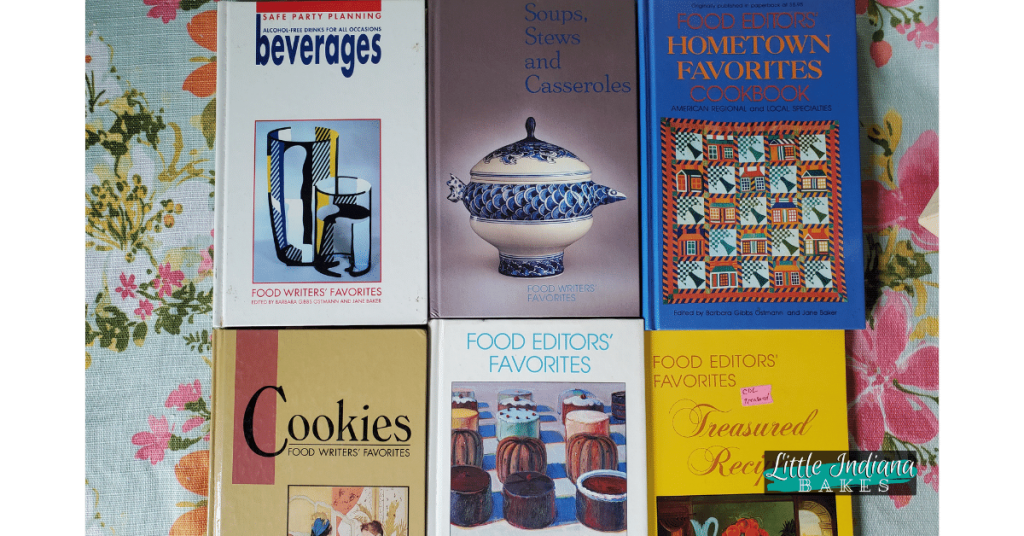
I’m a fan of the Food Editors’ and Food Writers’ cookbook series. I’ve included the list of these cookbooks at the bottom of this page (keep scrolling). These cookbooks are thin and shorter than you’d expect — but fun! I enjoy reading the names and newspapers or other print publications the editors or writers handled.
Carol Brock submitted the recipe and text about the brownstone front cake. After tasting this cake, I decided to see what else Carol Brock had gotten into.
As it turns out, this former newspaper editor did a whole heck of a lot for women in the food industry.
Food Editor Carol Brock

Carol Jean Lang was born on Dec. 14, 1923, in Queens, the only child of Charles and Helen Lang. Her mother was a homemaker; her father ran a butcher shop after losing money in real estate during the Great Depression.
Carol grew up in Beechhurst, a mostly affluent waterfront neighborhood in Queens. She earned her bachelor’s degree in home economics at Queens College before getting a master’s in food science from New York University.
At 20 she married Emil Andrew Brock, an accountant, and went to work for Good Housekeeping magazine as the hostess editor. Her son Brian said, “She’d do a lot of entertaining for prominent people who’d come to Good Housekeeping,” including the publisher, William Randolph Hearst, and his powerful associates.
Carol knew her way around the kitchen. But she didn’t have experience in the magazine business.
Lacking any journalistic training, she made a deal with management:
She would prepare luncheons for William Randolph Hearst and his guests — which included heads of states and other publishing luminaires including the Duke of Windsor, former President Herbert Hoover, and Cosmopolitan Editor-in-Chief Helen Gurley Brown — and, in return, the editors would teach her the magazine business.
Some sources claim Good Housekeeping created a new position for Carol Brock, that of Hostess Editor, while others call her Assistant Food Editor. I’m not sure how her roles at Good Housekeeping worked. Sources conflict.
It does appear that Carol developed recipes, worked on food photography, and had a hand editing several GH cookbooks. The only specific cookbook editorial mention I can find is the Good Housekeeping Party Book (Amazon, eBay).
I dug through my pile of GH cookbooks, but to no avail. I’d love to know the list of cookbooks she handled, wouldn’t you?
Carol stayed with Good Housekeeping for 23 years before heading over to Parents magazine. She accepted a role as food editor.
In 1971, Brock worked as a food reporter for the New York Daily News. For the next 15 years she produced the newspaper’s weekly food section. After she retired from the New York Daily News, she later contributed as a restaurant critic for the Times Ledger in Queens, N.Y.
Inspired by Boston’s Les Dames des Amis d’Escoffier, a dining and philanthropic society of women formed in 1959, she received a charter from the New York Chapter of Les Amis d’Escoffier in 1973. Her intent, however, was to garner visibility and elevate women in the culinary space.
Brock said, “We didn’t want a dining society. We wanted to show what women could do. We wanted to raise the Pyrex ceiling.”
In 1976 Brock established the first chapter of Les Dames d’Escoffier as a response to inequalities of women working in the culinary industries.
She, along with 50 culinary leaders, established Les Dames d’Escoffier New York (LDNY); the first professional platform to promote and support women in the food, beverage and hospitality industries.
Think about it: then as now, women have been and are relegated to traditional culinary roles. Yet, male chefs dominate the professional cooking scene.
When Brock established her organization, the prevailing culture in the culinary and hospitality industries was rife with discrimination against women in hiring, compensation, and educational opportunities.
Against this backdrop, she emerged as a visionary. Brock embarked on a journey to create a professional women’s organization determined to address and redress gender inequalities.
Her mission was to increase the presence and prestige of women in the food, wine, and hospitality industries which at the time were still largely dominated by men.
By 1976, starting with 50 top women professionals in New York City, Les Dames d’Escoffier New York (LDNY) was born.
Today, the organization founded by Brock is called Les Dames d’Escoffier International (LDEI), a worldwide society and the only one of its kind with 45 chapters in the U.S., Canada, Mexico, United Kingdom and France.
Its current membership includes some 2,400 women leaders in the food, fine beverage, and hospitality professions. As a 501(c)(3) organization, its goal is to secure donations and award scholarships to accomplished women who are studying to become the industry’s leaders of tomorrow.
Carol was involved in several organizations and groups beyond LEI, whether as a board member, president, or member. These include:
- Round Table for Women in Food Service
- New York Home Economists in Business
- Women Restaurant and Chefs Association
- New York Women’s Culinary Alliance
- International Hospitality Committee of the National Council of Women
- New York Culinary Historians
- Roundtable for Food Professionals
- James Beard Foundation
“On alternating years, Les Dames d’Escoffier International bestows the honor of naming a woman as Grande Dame of Les Dames d’Escoffier International,” reads the LEI website.
“This honorary title is given in recognition of extraordinary and unusual contributions to the fields of food, wine, other fine beverage, nutrition, the arts of the table, or other fields that relate to these disciplines. This title may be awarded to both non-members and members of Les Dames d’Escoffier,” the site added.
Grand Dames Honored by Chapters before the formation of LDEI, according to LEI include:
- Carol Brock
- M.F.K. Fisher
- Julia Child
- Grace Chu
- Nika Hazelton
- Helen McCully
- Caroline Rose Hunt
- Helen Bullock
- Julie Dannenbaum
Women honored after the formation of LDEI include:
- Marion Cunningham (1993)
- Anne Willan (1995)
- Madeleine Kamman (1997)
- Edna Lewis (1999)
- Jerry Anne DiVecchio (2001)
- Abigail Kirsch and Rosemary Kowalski (2003)
- Marcella Hazan (2005)
- Alice Waters (2007)
- Shirley Corriher (2009)
- Nathalie Dupree (2011)
- Dolores Cakebread (2013)
- Joan Nathan (2015)
- Nora Pouillon (2019)
- Bev Shaffer and Paula Lambert (2022)
Brownstone Front Cake Recipe

Bake up a cake like you’re a Grand Dame. Carol Brock’s Brownstone Front Cake is the perfect addition to any gathering. It’s a solid cake, so you don’t have to worry about it falling to pieces during transport. When you flip the cake out of the loaf pan, you’ll have glorious clean edges. Seriously, it’s an eye-catcher.
If you enjoy Texas Sheet Cake, you’ll find the flavor similar.
I was surprised when I noticed the recipe only uses brown sugar in the cake and powdered sugar (or confectioner’s sugar) in the frosting. There is no granulated sugar in this cake recipe. Apparently, there are different types of brownstone front cake if you browse enough cookbooks.
Some could include whipped egg whites, baking cocoa, sour cream, or buttermilk. They all seem to use all-purpose flour and skip the cake flour. They may include a white vanilla frosting, caramel frosting, or, as you’ll see below, chocolate frosting.
This homemade cake recipe is sometimes made with layer cake pans, but chocolate frosting over the chocolate loaf cake is the traditional version.
My chocolate frosting turned out a little too wet. I recommend using less milk. Measure the full amount, then use less, and adjust for how it feels. Mine poured well — and mostly right down off the sides.

Brownstone Front Cake Recipe: A Chocolate Cake in a Loaf Pan
Equipment
- 1 Electric Stand Mixer You can mix this recipe by hand too, but it will take longer.
- 1 9 x 5 x 3 Loaf Pan
Ingredients
Brownstone Front Chocolate Cake
- 2 Cups All-Purpose Flour
- 1 teaspoon Baking Soda
- 1/8 teaspoon Salt
- 2 1-Ounce Squares Baking Chocolate Unsweetened
- 1 Cup Boiling Water
- 1/2 Cup Unsalted Butter Softened (note, I typically use salted butter)
- 1 3/4 Cups Light Brown Sugar, Firmly Packed
- 2 Large Eggs
- 1/2 Cup Sour Cream
- 1 teaspoon Vanilla Extract
Brownstone Front Cake Chocolate Frosting
- 2 1-Ounce Squares Chocolate Unsweetened
- 2 Tablespoons Butter Softened
- 1/2 teaspoon Vanilla Extract
- Pinch Salt (pinch = less than 1/8 teaspoon)
- 1 to 1 1/2 Cups Powdered Sugar
- 1 Large Egg Or pasteurized egg equivalent
- 1/4 Cup Milk start with less than 1/4 cup. Add up to 1/4 cup Milk if necessary.
Instructions
For Brownstone Front Cake
- 325* oven
- Grease 9 x 5 x 3 loaf pan and set aside.
- Combine Flour, Baking Soda, and Salt in a bowl. Whisk together. Set aside.
- Set Chocolate in a small bowl. Pour the boiling water over the Chocolate. Set aside.
- In the bowl of an electric mixer, cream Butter and Sugar until soft, fluffy, and lightened in color.
- Slowly add Brown Sugar in increments and beat until creamy after each addition.
- Add the Eggs and Vanilla Extract and beat until combined.
- Add the Flour mixture alternately with the Sour Cream. Begin and end with the Flour.
- Stir in the chocolate mixture until blended.
- Pour the batter (it will be thin) into the prepared pan.
- Bake 325* for 50 to 60 minutes or until a cake tester inserted in the middle comes out with a few not dry crumbs. Jess Note: My cake took much longer to bake.
- Cool 10 minutes in the pan. Then, turn out onto a cooling rack to cool to room temperature.
- Frost with the chocolate frosting.
Chocolate Frosting Recipe
- Melt the chocolate over hot, not boiling, water.
- Beat together the Butter, Vanilla Extract, and Salt in a separate bowl.
- Beat in the Powdered Sugar, in small amounts at a time.
- Then, beat in an Egg, a smaller amount of the Milk (under the 1/4 cup), and the Melted Chocolate.
- Beat until smooth and creamy. Add more Milk or a little more Powdered Sugar if the consistency is too soft.
- Spoon the frosting over the cooled cake. Serve.
List of Cookbooks in the Food Editors’ and Food Writers’ Series
These cookbooks are available in paperback and hardback versions. I’ve included both.

Food Writers’ Favorites Grilling Quick and Easy Recipes: Safe Party Planning Vol. (1990) Edited by Barbara Gibbs Ostmann and Jane Baker (Amazon) (eBay)
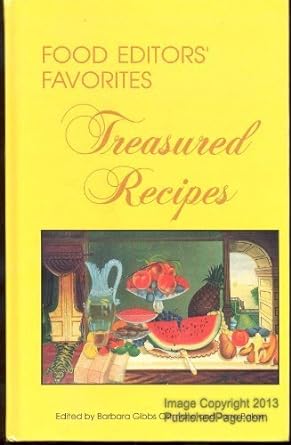
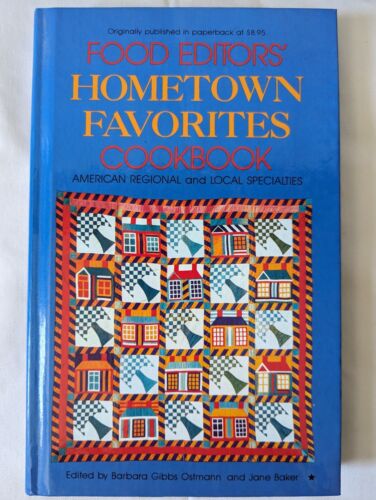











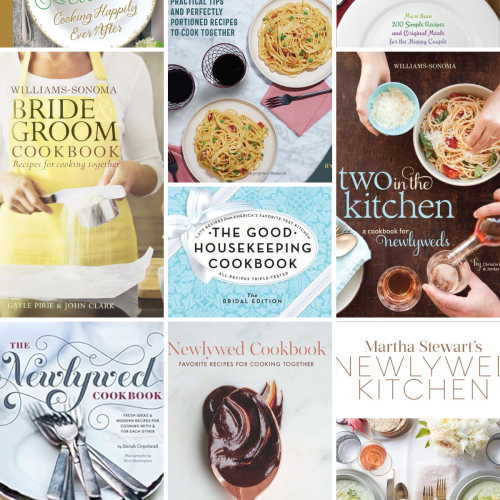
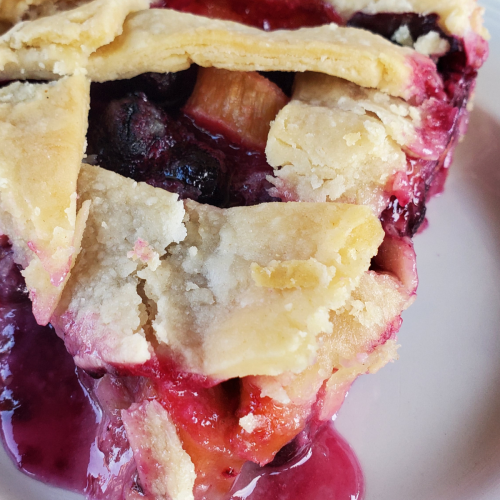
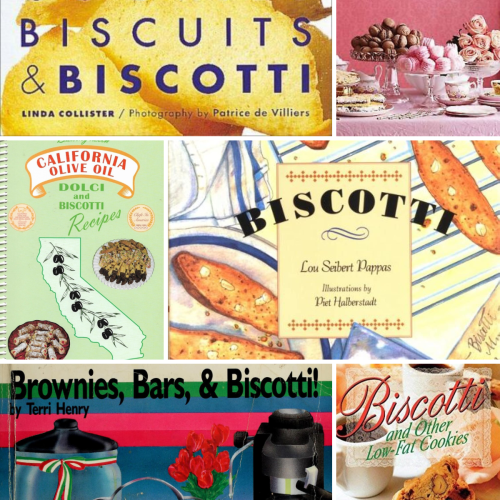
Leave a Reply